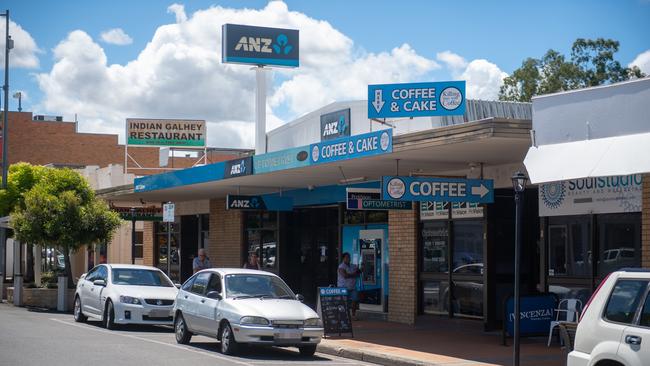Banks lob proposals for rural services as $350m levy inches closer
Banks have put forward alternative proposals to the government as it weighs the imposition of an annual $350m levy to keep rural branches open.

Banks have lobbed alternative proposals to Treasury as it consults on a $350m levy to keep rural branches open, with the industry clashing on the prospect of a collective “pot” that benefits just two or three lenders.
Alternatives proposed by banks include greater support to Australia Post and its Bank@Post offering, that more lenders sign up to the moratorium on branch closures, and that each lender invest in its own network and provision of services, rather than contribute to a collective pot, The Australian understands.
While Commonwealth Bank is understood to support an industry-wide contribution to keep branches in the bush open, others are seeking alternative solutions, with a rift quickly emerging.
The major banks are split in part because of the perception that some are failing to pull their weight in supporting the regions.
NAB is yet to sign up to a moratorium on rural branch closures, unlike the other big three – though CBA has transitioned its Bankwest branches to “digital-only banks”, while ANZ has not yet signed on to Bank@Post.
This is despite the government making it a condition of its approval for ANZ to take over Suncorp Bank that ANZ “make best endeavours” to join Bank@Post for at least three years.
An ANZ spokesman said the lender continues to engage with Australia Post, nearly six months after Treasurer Jim Chalmers gave the takeover the green light.
“We would welcome a fair and proportionate agreement around Bank@Post,” he said.
CBA, NAB and Westpac already pay tens of millions of dollars in annual fees to Australia Post to provide the Bank@Post services. But Australia Post has argued it is losing money from the deal, with bank branch closures, including in regional areas, resulting in a big jump in customers using Bank@Post.
Banks have also questioned Treasury’s modelling for the proposed $350m levy that stunned the industry last month, with some calling for business deposits to be included. The current modelling takes into account banks’ regional branch and ATM presence, as well as the size of their household deposits.
Under Treasury’s proposal, lenders with a large regional presence relative to household deposits would benefit from the levy, while those with large deposits and a small regional and rural presence would not. CBA and Westpac have the biggest household deposit share, at 27 per cent and 21 per cent of the market.
But some are lobbying for business deposits to be included, arguing that a sizeable proportion of regional business customers, particularly small businesses, regularly use branch services.
The proposal also penalises digitally focused lenders such as Macquarie and ING, both branchless banks, with some banking analysts warning the levy would raise costs, make it harder to be price competitive, and could even have Macquarie exit the home lending market.
Bendigo Bank and NAB are major winners of the levy as it stands, with Bendigo Bank to pocket an estimated $200m of the $350m total and NAB $75m, under a redistribution model that would effectively be funded by their competitors.
Westpac will take the biggest hit, at a reported $100m, while CBA and Macquarie would have to stump up $75m each. ING will pay $60m, while ANZ and HSBC could each have to pay $20m.
On the orders of Treasury, bank executives have signed nondisclosure agreements about the levy proposal, preventing them from talking about the consultation or its potential impact.
While Treasury is still consulting with banks, The Australian understands the government may announce a decision before the end of the year.
The proposed levy follows substantial branch closures by the major lenders as digital take-up has accelerated – 2334 branches have disappeared since mid-2017, leaving about 3360 across the nation, data from the prudential regulator shows. Just 39 branches remain in very remote areas, almost half the level in 2017, and 91 in places deemed remote.




To join the conversation, please log in. Don't have an account? Register
Join the conversation, you are commenting as Logout